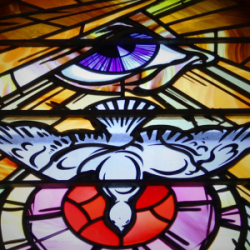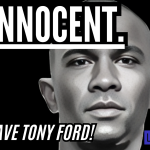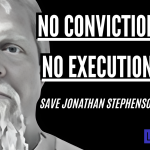Welcome readers! Please subscribe through the buttons on the right if you enjoy this post.
(Read this series from its beginning here.)

Let’s look at each piece of the story:
- The demoniac encounters Jesus.
- The demoniac refers to Jesus as the “Holy One of God.” This is a political title Mark uses purposefully, and it’s a title that King David used for himself (Psalm 4:3; Psalm 15:10). It was also the title given to Aaron (Psalm 106:16, LXX).
- The demoniac assumes Jesus has come to execute the social phenomenon of sacrificial destruction: “Have you come to destroy us?”
In this interpretation, demoniacs symbolize those who have internalized self-hatred from their community. Mark’s demoniac sees Jesus as the “holy one” who has come to carry out the expulsion he “deserved”—to destroy rather than liberate.
But Jesus’ role in this story is not to destroy lives but to liberate, heal, and restore. Jesus rejects the title given to him because he’s not the figurehead of this social phenomenon of exclusion. He represents something much different.
Jesus had come not to sacrifice scapegoats but to do away with the entire system of basing societies on sacrificing/scapegoating those considered to be “other.” He desired “mercy not sacrifice”: he had come to destroy the very system that creates demoniacs.
Two phrases in our story suggest the author’s point:
“They were astounded at his teaching, for he taught them as one having authority, and not as the scribes.”
“They were all amazed, and they kept on asking one another, ‘What is this? A new teaching—with authority! He commands even the unclean spirits, and they obey him.’”
Ched Myers gives insight into this contrast between those in authority within Jesus’ community and Jesus in his insightful volume, Say to This Mountain:
“The essential conflict is thus defined as the contest over authority between Jesus and the scribal establishment, a contest which will be central to the entire story. Sandwiched in between is an ‘unclean spirit’ who ‘protests” Jesus’ presence: ‘Why do you meddle with us?’ (1:23f; see Judges 11:12; 1 Kings 17:18). However, the demon’s defiance quickly turns to fear: ‘Have you come to destroy us?’ Who is the ‘we’ on whose behalf the demon speaks? The function of Mark’s framing device suggests that the demon’s voice represents the voice of the scribal class whose ‘space’ Jesus is invading. The synagogue on the Sabbath is scribal turf, where scribes exercise the authority to teach Torah. This ‘spirit’ personifies scribal power, which holds sway over the hearts and minds of the people. Only after breaking the influence of this spirit is Jesus free to begin his compassionate ministry to the masses (1:29ff). To interpret this exorcism solely as the ‘curing of an epileptic’ is to miss its profound political impact. In contrast to Hellenistic literature, in which miracle-workers normally function to maintain the status quo, gospel healings challenge the ordering of power. Because Jesus seeks the root causes of why people are marginalized, there is no case of healing and exorcism in Mark that does not also raise a larger question of social oppression.” (Ched Myers, Say to This Mountain: Mark’s Story of Discipleship, p. 14)
With his healing act, Jesus is contradicting the community’s evaluation of their “othered” one. This same one has internalized their community’s evaluation and is thus “possessed” by the community’s hatred transformed into self-hatred. Jesus emerges in the stories to contradict the community’s “othering” and to stand in contrast with those in positions of authority within this system of “othering.”
We’ll consider what this has to do with us today, next.

















